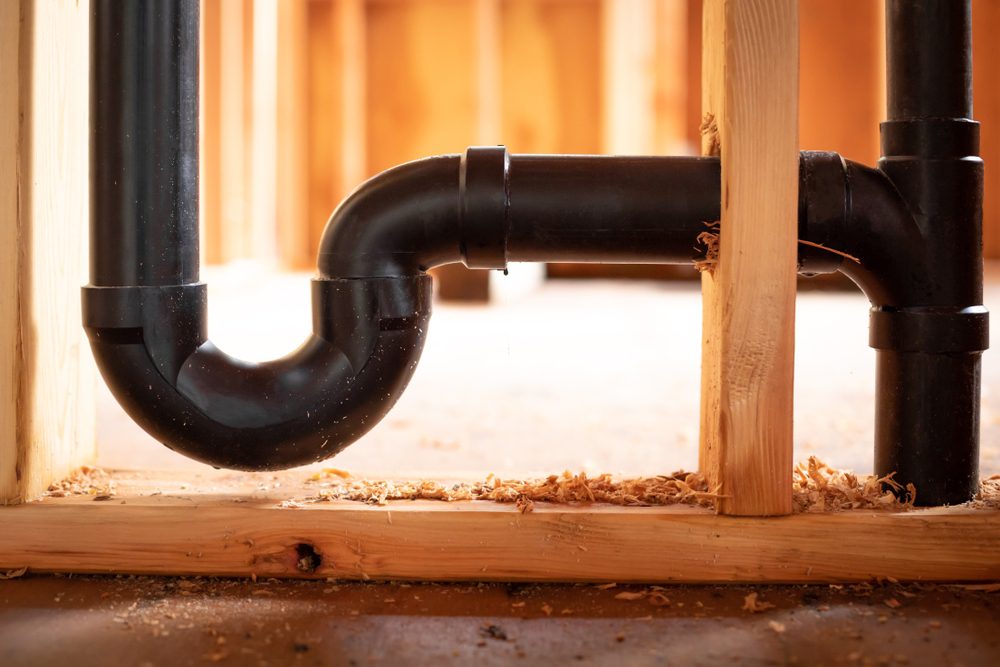The Advantages of Adequate Ventilation in Your Plumbing System
The Advantages of Adequate Ventilation in Your Plumbing System
Blog Article
We've stumbled upon this post on What Is A Plumbing Vent & How Do They Work? directly below on the net and believe it made good sense to discuss it with you on this site.

Correct ventilation in plumbing systems is frequently neglected, yet it is crucial for keeping the capability and security of your home's pipes. Ventilation helps manage atmospheric pressure, avoid the build-up of damaging gases, and ensure the effective elimination of waste. In this overview, we will explore the relevance of appropriate pipes ventilation, how it functions, and the benefits it offers your plumbing system.
Exactly How Air Flow Works in Plumbing Solutions
Atmospheric Pressure Law
Proper air flow preserves balanced atmospheric pressure within the plumbing system. When water moves through pipelines, it displaces air. Without adequate ventilation, this variation can create unfavorable pressure, causing slow drains pipes or siphoning of water from catches, which can trigger unpleasant smells to leak into the home.
Protecting Against Drain Gas Buildup
One of the most critical functions of plumbing vents is to stop drain gases, such as methane and hydrogen sulfide, from accumulating within the home. These gases can present severe wellness threats and are very flammable. Vent pipelines allow these gases to run away safely outdoors.
Assisting in Waste Elimination
Ventilation helps in the effective elimination of wastewater by stopping airlocks in the drainage system. When air can stream openly through the vents, it enables water and waste to stream smoothly with the pipelines, decreasing the risk of clogs and back-ups.
Benefits of Correct Ventilation
Boosted System Effectiveness
Properly aerated pipes systems run extra efficiently, with less blockages, faster draining pipes, and much less stress on the pipes. This performance extends the life expectancy of the plumbing system.
Improved Air Top Quality
By stopping sewage system gases from entering your home, correct ventilation adds to much better indoor air high quality, making your living atmosphere healthier and a lot more comfortable.
Protecting Against Water Damage
Adequate air flow helps protect against water from being siphoned out of catches, which can result in drain gases getting in the home and triggering water damages in time.
Steps to Make Certain Appropriate Air Flow
Consulting Plumbing Codes
Always get in touch with local plumbing codes when making or modifying your pipes system. These codes give the needed standards for appropriate venting and ensure your system meets safety and security criteria.
Routine Evaluation and Upkeep
Routine inspections can aid determine possible ventilation issues prior to they become major troubles. Upkeep jobs, such as cleaning up vent pipes and checking for obstructions, are necessary for maintaining the system in good working order.
Specialist Setup
For new setups or major alterations, it's a good idea to work with a specialist plumbing. They have the proficiency to ensure the ventilation system is correctly created and set up according to code.
Understanding Ventilation in Plumbing
Air flow in plumbing refers to the network of pipelines that allow air to flow through the drainage system. These vents offer multiple purposes, consisting of managing atmospheric pressure within the pipes, protecting against sewage system gases from going into the home, and assisting in the smooth flow of wastewater.
Types of Plumbing Vents
Main Heap Vent
The main pile air vent, also referred to as the air vent pile, is the primary air vent in a pipes system. It extends from the primary drainpipe line up through the roofing system, allowing gases to leave and fresh air to go into the system.
Branch Vent
Branch vents attach to the primary stack vent and serve private fixtures, such as sinks, bathrooms, and showers. These vents make certain that each fixture has sufficient ventilation to operate effectively.
Air Admission Valve (AAV).
An Air Admittance Valve (AAV) is a one-way shutoff that permits air to get in the plumbing system without the need for a typical air vent pipeline expanding through the roof. AAVs are typically utilized in improvements or locations where mounting a common vent is impractical.
Signs of Poor Ventilation in Plumbing.
Slow Draining Fixtures.
If your sinks, tubs, or commodes are draining gradually, maybe an indicator of poor ventilation. Insufficient air circulation can create a vacuum effect, making it hard for water to drain effectively.
Gurgling Appears.
Gurgling audios originating from drains pipes are often a result of air being drawn with water traps as a result of unfavorable stress in the pipelines. This is a clear indicator of inadequate air flow.
Unpleasant Smells.
Sewer smells inside your home are a red flag that your plumbing system is not properly ventilated. This could indicate that drain gases are not being adequately vented outside, causing possibly dangerous conditions.
Usual Air Flow Errors.
Poor Vent Sizing.
Using small vent pipelines can cause bad air flow and stress imbalances in the system. It's essential to make use of vents that meet the certain needs of your plumbing system.
Improper Vent Placement.
Putting vents too far from the fixtures they serve can minimize their effectiveness. Appropriate placement makes certain that air can flow openly and successfully via the system.
Disregarding Code Demands.
Building codes offer specific standards for plumbing air flow. Neglecting these codes can lead to a system that fails to operate appropriately and may cause pricey repairs or health hazards.
Final thought.
Correct ventilation is a crucial component of any kind of pipes system, making certain that it functions efficiently and safely. By understanding the significance of air flow, acknowledging the indicators of poor air flow, and taking steps to keep your system, you can avoid pricey concerns and safeguard your home's air high quality.
4 Things You Should Know About Your Plumbing Vents
What Plumbing Vents Are
Also called a vent stack, a plumbing vent is a vertical pipe attached to your drain line that runs through your roof. The plumbing vent pipe, or plumbing air vent, removes gas and odors from your plumbing system and allows fresh air to enter the pipes, helping the water to flow out of the drain pipes.
What Plumbing Vents Do
Plumbing vents have two basic functions. One of which is to allow unpleasant smelling wastewater and sewer gasses to escape your plumbing system instead of entering your home. Plumbing vent pipes are typically located on roofs, away from windows, to ensure the fumes exit the home completely.
The other function of the plumbing vent is to move fresh air into your plumbing system. This helps move water through every plumbing fixture in your house, like toilets and sink drains. Think of the way in which you need to let a little air into the bottle as you pour soda in order to make the drink flow smoothly.
Different Types of Plumbing Vents
True vent: This is the most common vent option. In simplest terms, a true vent is a vertical pipe attached to your drain line that exits through the roof. They often function as the main vent that other fixtures can connect to. Re-vent pipe or auxiliary vent: Attached to the drain line near specific plumbing fixtures, re-vent pipes run up and over to connect to the main vent. Common vent: Two plumbing fixtures installed on opposite sides of a wall are typically tied into the vent stack using something known as a sanitary cross. Wet vent: This venting option operates as a drain pipe and a vent at the same time. Wet vent drainage systems drain water from one fixture while venting the air from another. Although they’ve been used for over 100 years, wet vent systems have only recently been added to the plumbing code in many areas. If you’re planning on installing one in a bathroom remodel, make sure you check your local code prior to construction. Loop vent: For free-standing fixtures like kitchen island sinks, loop vents are ideal. These vent pipes run under the floor, rise from the P-trap, and create a loop inside the cabinet sink. Air admittance valve: An AAV is a one-way mechanical valve typically installed at the site of the plumbing fixture. AAVs allow venting to occur without having to tie into a larger venting system. They’re ideal for venting fixtures where you aren’t able to easily connect to an existing vent system. Common Plumbing Vent Issues
Although vent pipes typically don’t have water flowing through them, they’re still subject to many typical plumbing issues. For example, clogs are one of the most common problems associated with sewer vent pipes. If your vent pipe gets clogged, all of your plumbing fixtures tied into the vent stack will be affected.
A sink with a slow drain that bubbles and gurgles or a strong sewage smell around your toilet are both indicators that your toilet vent pipe is clogged. Because most vent pipes exit through the roof, old leaves, twigs or even a bird’s nest could be clogging the pipe.
Clogs in your vent pipe system cause a buildup of negative pressure, meaning that water won’t be able to flow out of your home very well. It’s similar to putting your finger over the opening of a straw to trap water inside. When you remove your finger, the water is able to flow out of the straw.
If you suspect you have any blockage in your vent, make sure you have a professional come examine the situation. Left unchecked, a blocked air vent can lead to other costly repairs, like leaks and sediment buildup.
Under Pressure
Pipe vents are essential aspects of a home’s plumbing system. Owning a home means learning about all sorts of things you never put much thought into before. But by understanding as much as you can about the important systems of your home, you can keep those budgets intact and those anxiety levels low.
https://www.homeserve.com/en-us/blog/home-improvement/plumbing-vents/

I am just very intrigued by The Upsides of Proper Ventilation in Plumbing Design and I am hoping you enjoyed reading the new article. So long as you liked our blog entry kindly make sure you remember to share it. I am grateful for being here. Kindly pay a visit to our blog back soon.
Estimating Report this page